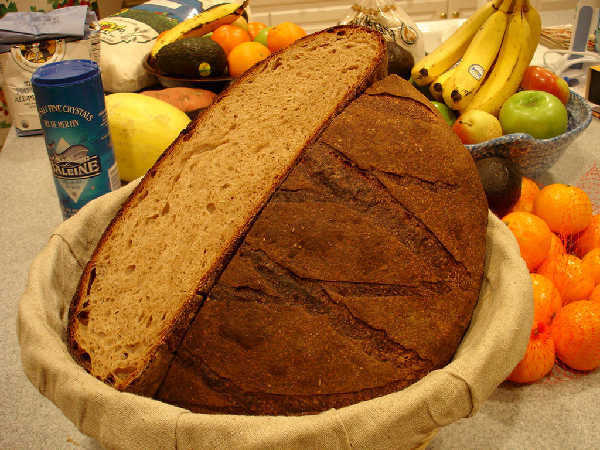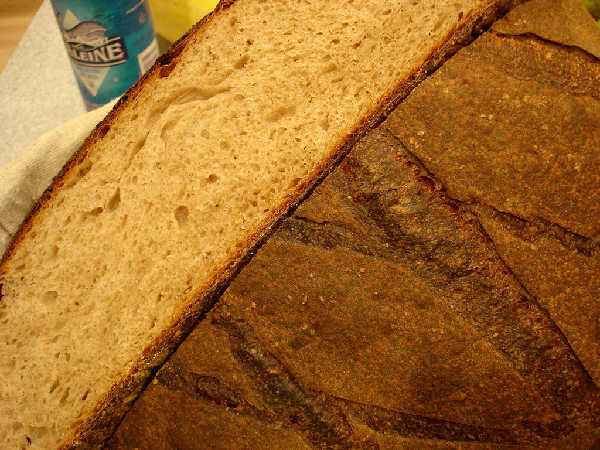
Janedo's "basic bread"

Janedo's basic bread crumb
Jane ("Janedo") is an American expatriot who has lived in France for 15 years with her husband and children. She has a wonderful blog about her sourdough baking ( http://www.aulevain.canalblog.com/ ) with a loyal and enthusiastic following. We have been fortunate to have her participation on TFL, and there have been some rather interesting discussions of differences in taste preferences in France versus the U.S., the frustrations of exchanging recipes when the ingredients we use, particularly the flours, are not comparable and other topics.
Currently, Jane is, I think it's fair to say, struggling to like San Francisco style sourdough bread made from Peter Reinhart's formula in "Crust and Crumb." Of course, we cannot know exactly what she is baking, since we cannot duplicate it with the flours we have. Nor can she know what my baking from this formula produces with King Arthur Bread Flour and Guisto's whole rye flour.
Jane has shared the recipe for what she calls her "basic bread." She says this is the bread her family prefers (and asks her to return to whenever she inflicts San Francisco-style sourdough on them). This was my first attempt to duplicate Jane's bread. She uses a combination of T65 and white spelt flour. I don't have access to T65. I debated as to how I might best approximate it. I'm not at all sure I made the best decision, but the recipe and procedure I used, adapted from Jane's recipe, follows:
Ingredients
150 gms active liquid starter (fed with high extraction flour, 100gms flour to 130 gms of water))
315 ml water
400 gms First Clear flour
140 gms White Spelt flour
7 gms Sea Salt.
Procedure
I mixed the starter and 300 ml water then added the flours and salt. I mixed in a KitchenAid stand mixer with the paddle for 1.5 minutes at Speed 1, then with the dough hook at Speed 2. After the first minute, the dough cleaned the sides and bottom of the mixer bowl. This seemed too dry, so I added 1 T (15 ml) water at this point, resulting in the dough still cleaning the sides but sticking to the bottom of the mixer bowl.
The dough made a "window pane" after 9.5 minutes mixing with the dough hook. It was quite tacky. If I pressed on it for a couple of seconds, it was sticky, but with brief contact it did not stick to my (lightly floured) hands. The dough kept its form easily without spreading but was very extensible.
(I am describing the dough in such detail because the differences in flours we use result in such different doughs at the same hydration. I think the behavior of the dough and its feel will give another person better guidance, if they want to reproduce this bread. For that matter, it gives me more guidance if I want to change it next time.)
I put the dough on a lightly floured Silpat mat and, after a brief rest, stretched and folded it a couple of times, then placed the dough in a lightly oiled glass 2 liter measuring cup with a cover to ferment.
The dough doubled in volume in 7 hours. I scraped it onto the Silpat, rounded it gently and let it rest for 15 minutes. I then shaped a boule and placed it, smooth side down, in a linen-lined wicker banneton. I lightly floured the surface of the dough and enclosed the banneton in a plastic bag.
The boule was allowed to expand to 1 1/2 times the original volume (1.75 hours) then transfered to a peel and slid onto a baking stone in a pre-heated 450F oven. 1 cup of boiling water was poured into a pre-heated cast iron skillit, the oven door was closed and the oven was turned down to 410F. After 5 minutes, I removed the skillit and continued to bake for 35 minutes. (The internal temperature of the loaf was 205F after 30 minutes, but I wanted the crust a bit darker and to be sure this large loaf was well-baked.) I then turned off the oven but left the loaf in the oven for another 5 minutes.
The crust was qute hard when the boule came out of the oven, but it softened considerably as the loaf cooled.
Eating
The crust was somewhat crunchy, but more chewy. The crumb had a lovely, tender, slightly chewy texture. I could not identify a distinctive flavor I could attribute to the spelt flour (which I had never used before). I thought I should add a little more salt next time - maybe 10 gms rather than 7 gms. The sourness in the bread hit on the 5th chew and became progressively more apparent. I would regard this as a moderately sour sourdough, certainly more sour than the pains au levains I have made from Hamelman or Leader's recipes.
With all levain breads, the flavors seem to fully develop and become better integrated on the second or third day after baking. So, stay tuned.
David







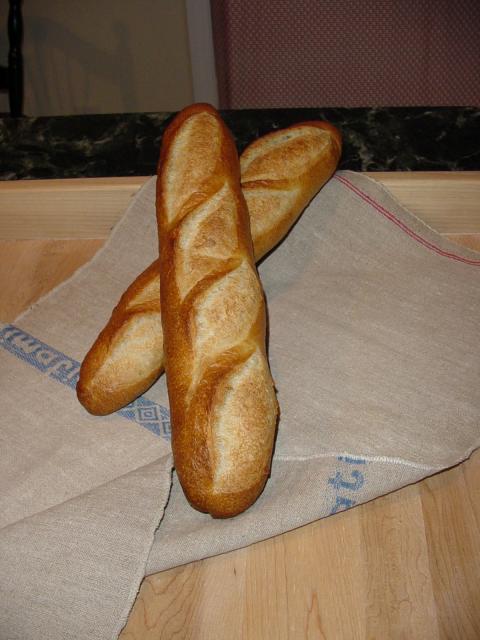




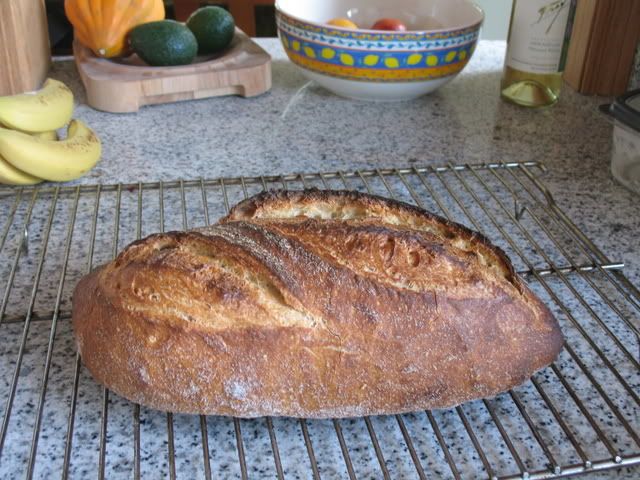



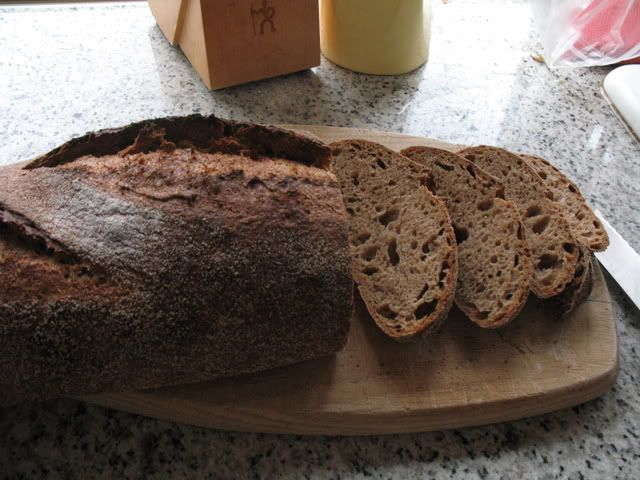

 Whole Spelt Hearth Bread
Whole Spelt Hearth Bread
